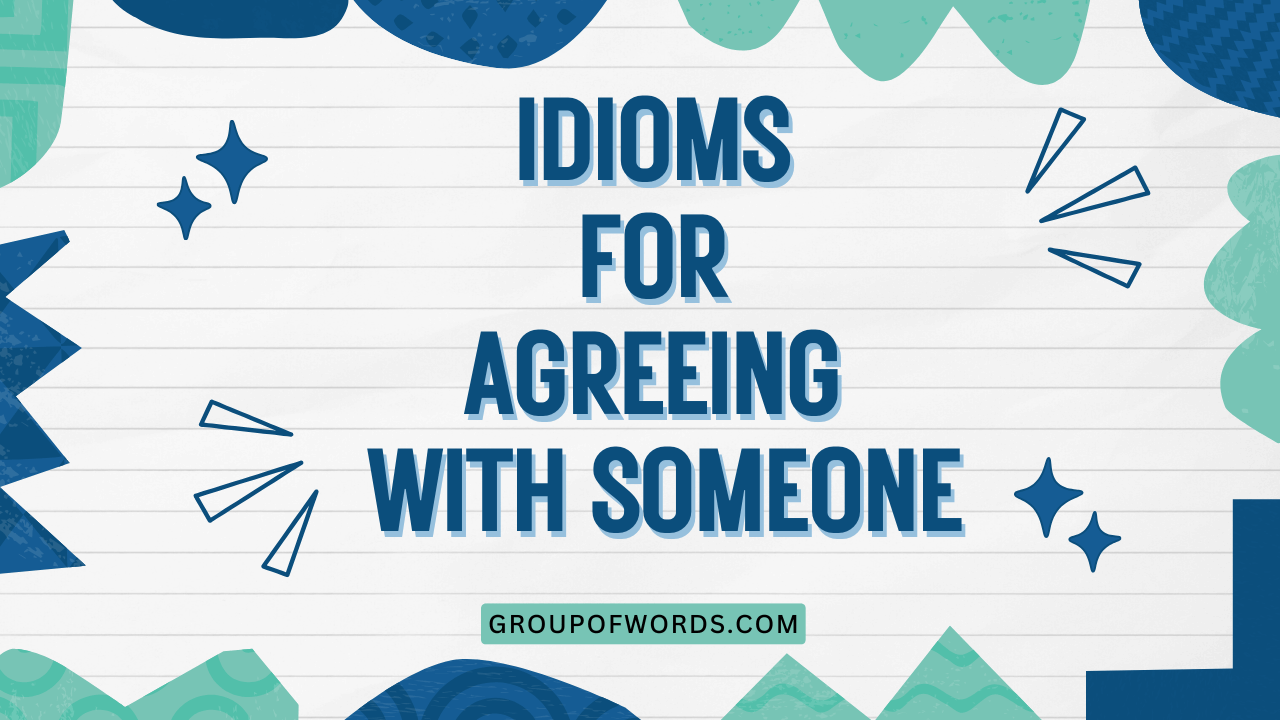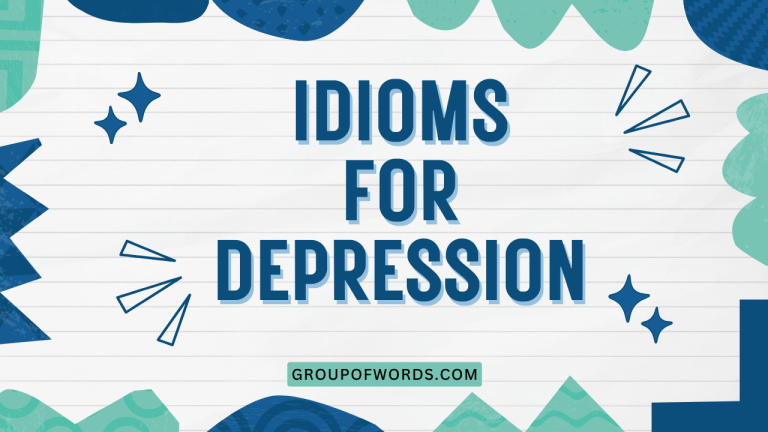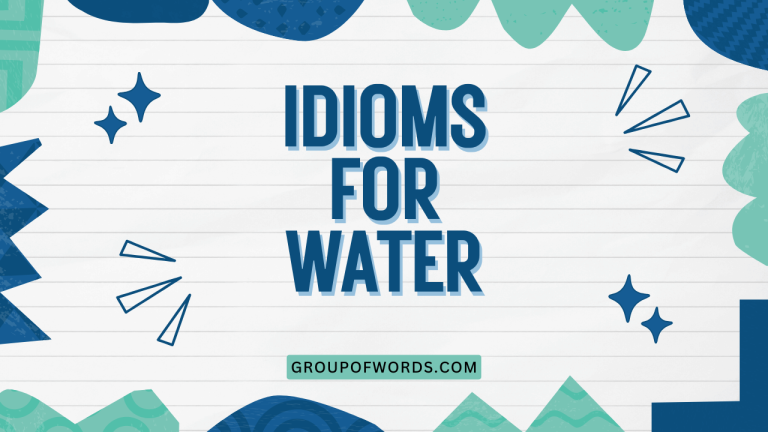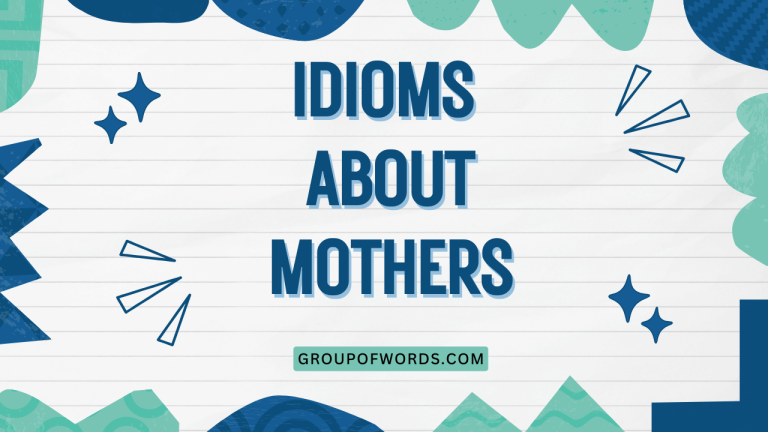Agreeing Like a Native: Mastering English Idioms for Agreement
Expressing agreement effectively is a crucial part of communication in any language. While simple phrases like “I agree” are perfectly acceptable, mastering idioms for agreement adds nuance, color, and sophistication to your English.
This article delves into a wide range of idioms that convey agreement, helping you to understand their meanings, contexts, and proper usage. Whether you’re an English language learner or a native speaker looking to enhance your vocabulary, this guide will provide you with the tools to express agreement with confidence and flair.
This article is designed for English language learners of all levels, from intermediate to advanced. Native English speakers looking to refresh or expand their idiomatic vocabulary will also find it useful.
By the end of this guide, you’ll be equipped with a diverse set of idioms to express agreement in various social and professional situations, enhancing your communication skills and making your speech more engaging and natural.
Table of Contents
- Definition: Idioms for Agreement
- Structural Breakdown of Agreement Idioms
- Types and Categories of Agreement Idioms
- Examples of Agreement Idioms
- Usage Rules for Agreement Idioms
- Common Mistakes When Using Agreement Idioms
- Practice Exercises
- Advanced Topics: Nuances in Agreement
- Frequently Asked Questions
- Conclusion
Definition: Idioms for Agreement
Idioms for agreement are phrases or expressions whose meaning cannot be understood simply by combining the literal meanings of the individual words. Instead, they convey a figurative or non-literal meaning of concurrence, consent, or affirmation. These idioms are used to express that you share the same opinion, view, or feeling as someone else. They add color and depth to your language, making your communication more engaging and nuanced.
The function of idioms for agreement is to express agreement in a more vivid and interesting way than simply saying “I agree.” They can also convey different degrees of agreement, from wholehearted endorsement to reluctant acceptance. The context in which you use an idiom is crucial, as some idioms are more appropriate for formal settings, while others are better suited for informal conversations.
Idioms for agreement are classified as fixed expressions, meaning that the words in the idiom cannot be changed without altering or losing the intended meaning. They are a significant part of English vocabulary and understanding them is essential for effective communication, particularly in social and professional settings. Understanding these idioms allows you to better interpret the nuances of spoken and written English.
Structural Breakdown of Agreement Idioms
Agreement idioms can be broken down into several structural categories based on their grammatical form. These forms include:
- Phrasal Verbs: These idioms combine a verb with a preposition or adverb, such as “see eye to eye” or “go along with.”
- Similes: These idioms use “like” or “as” to make a comparison, such as “like-minded.”
- Metaphors: These idioms use figurative language to represent agreement, such as “on the same page” or “singing from the same hymn sheet.”
- Expressions with “Same”: Many idioms use the word “same” to indicate shared views, such as “same here” or “on the same wavelength.”
- Expressions with Body Parts: Some idioms incorporate body parts to illustrate agreement, like “nod in agreement” or “give the thumbs up.”
Understanding the structure of these idioms can help you remember and use them more effectively. Recognizing the grammatical components allows you to better grasp the underlying meaning and context in which the idiom is used.
Consider the following examples:
- “See eye to eye” (Phrasal Verb): This implies a shared perspective or understanding.
- “On the same page” (Metaphor): This means everyone is informed and agrees on the plan.
- “Same here” (Expression with “Same”): A simple way to say “I agree.”
By analyzing the structural elements of agreement idioms, you can enhance your comprehension and application of these expressions in everyday conversation and writing. This knowledge also assists in distinguishing idioms from literal phrases, which is crucial for accurate interpretation.
Types and Categories of Agreement Idioms
Agreement idioms can be categorized based on the intensity and context of the agreement they convey. Here are some common categories:
Idioms for Complete Agreement
These idioms express that you agree entirely with what someone has said or proposed. They leave no room for doubt or disagreement.
Idioms for Partial Agreement
These idioms indicate that you agree with some aspects of what someone has said, but not necessarily everything. They suggest a nuanced level of agreement.
Idioms for Enthusiastic Agreement
These idioms convey a strong and positive agreement, often accompanied by excitement or approval. They are used when you are particularly pleased or impressed with the idea or statement.
Idioms for Reluctant Agreement
These idioms suggest that you agree, but not without hesitation or reservation. They indicate that you may have some doubts or concerns, but ultimately concede.
Idioms for Formal Agreement
These idioms are appropriate for professional or academic settings. They are more sophisticated and less colloquial than informal idioms.
Idioms for Informal Agreement
These idioms are suitable for casual conversations with friends, family, or acquaintances. They are often more relaxed and colloquial.
Examples of Agreement Idioms
Below are examples of agreement idioms categorized by type, along with their meanings and example sentences. These examples provide practical illustrations of how to use these idioms effectively in conversation and writing.
Each section contains a table with multiple examples to enhance your understanding.
Examples of Idioms for Complete Agreement
These idioms signify that you are in full agreement with someone. They leave no room for doubt or reservation.
The following table showcases idioms that express complete agreement, providing context through example sentences:
| Idiom | Meaning | Example Sentence |
|---|---|---|
| See eye to eye | To agree fully; to have the same opinion. | “We finally saw eye to eye on the budget proposal after a long discussion.” |
| On the same page | To have a shared understanding or agreement. | “Before we start the project, let’s make sure we’re all on the same page.” |
| In complete accord | In total agreement. | “The committee was in complete accord regarding the new policy.” |
| Of one mind | Having the same opinion or intention. | “The team was of one mind about the best course of action.” |
| Singing from the same hymn sheet | Expressing the same views or opinions. | “It’s good to see that the marketing and sales teams are finally singing from the same hymn sheet.” |
| On the same wavelength | Thinking in a similar way; understanding each other well. | “We’re on the same wavelength, so I know we’ll work well together.” |
| In agreement | Sharing the same opinion or feeling. | “We are in agreement that this is the best solution.” |
| A hundred percent | Completely; entirely. | “Do you agree with this plan?” “A hundred percent!” |
| Couldn’t agree more | Expressing strong agreement. | “That’s a great idea.” “I couldn’t agree more!” |
| You can say that again | Expressing strong agreement. | “This weather is terrible!” “You can say that again!” |
| Absolutely | Completely and without a doubt. | “Is this the right way to do it?” “Absolutely!” |
| Precisely | Exactly; in exact agreement. | “That’s exactly what I was thinking.” “Precisely!” |
| That’s spot on | Exactly right; perfectly accurate. | “Your analysis is spot on.” |
| Right on the money | Exactly correct; accurate. | “His prediction was right on the money.” |
| Totally | Completely; absolutely. | “Do you like this song?” “Totally!” |
| No doubt about it | Certainly; without question. | “Is he the best candidate?” “No doubt about it!” |
| True that | An informal way of saying “that’s true” or “I agree.” | “This movie is amazing.” “True that!” |
| Word | An informal way of expressing agreement. | “We should go to the beach.” “Word!” |
| You took the words right out of my mouth | Expressing that someone has said exactly what you were thinking. | “That’s exactly what I wanted to say! You took the words right out of my mouth.” |
| My thoughts exactly | Expressing that you have the same thoughts or opinions. | “I think we should invest in this company.” “My thoughts exactly.” |
| Ditto | The same as what was said previously. | “I’m tired.” “Ditto.” |
| Amen to that | Expressing strong agreement or approval. | “We need a change in leadership.” “Amen to that!” |
| That’s the gospel truth | Absolutely true; undeniably correct. | “What he said is the gospel truth.” |
| I second that | Expressing support for a motion or statement. | “I move that we adjourn the meeting.” “I second that.” |
| Couldn’t have said it better myself | Expressing that someone has articulated your thoughts perfectly. | “That’s the best explanation I’ve heard. I couldn’t have said it better myself.” |
Examples of Idioms for Partial Agreement
These idioms indicate that you agree with some aspects of what someone has said, but not everything. They suggest a nuanced level of agreement.
The table below offers idioms that show partial agreement, providing context through example sentences:
| Idiom | Meaning | Example Sentence |
|---|---|---|
| I see your point, but… | Acknowledging someone’s perspective while expressing a different view. | “I see your point, but I still think we should consider other options.” |
| That’s true, but… | Acknowledging the truth in a statement while introducing a contrasting idea. | “That’s true, but it doesn’t solve the underlying problem.” |
| You have a point there | Acknowledging that someone has made a valid argument. | “You have a point there; we should consider the environmental impact.” |
| I agree to a certain extent | Agreeing partially but not entirely. | “I agree to a certain extent, but I still have some reservations.” |
| Up to a point | Agreeing partially but with limitations. | “I agree with you up to a point, but I think you’re exaggerating.” |
| That’s partly true | Acknowledging that a statement is partially correct. | “That’s partly true, but there are other factors to consider.” |
| I can see where you’re coming from | Understanding someone’s perspective, even if you don’t fully agree. | “I can see where you’re coming from, but I still disagree with your conclusion.” |
| Fair enough | Acknowledging that someone has made a reasonable point. | “Fair enough; I hadn’t thought of it that way.” |
| I suppose so | Expressing reluctant or qualified agreement. | “Do you think we should try this approach?” “I suppose so.” |
| Maybe | Expressing uncertainty or partial agreement. | “Will this plan work?” “Maybe; it’s worth a try.” |
| I guess you’re right | Conceding that someone is correct, often reluctantly. | “I guess you’re right; we should have planned better.” |
| I’ll give you that | Acknowledging that someone has made a valid point. | “I’ll give you that; their marketing strategy is effective.” |
| To some degree | Agreeing partially but not entirely. | “To some degree, I agree with your assessment.” |
| In some respects | Agreeing in certain aspects but not others. | “In some respects, this is a good idea.” |
| That may be the case | Acknowledging a possibility without fully agreeing. | “That may be the case, but we need more evidence.” |
| Not necessarily | Expressing that something is not always true or applicable. | “Is this the only way to solve the problem?” “Not necessarily.” |
| That’s one way to look at it | Acknowledging one perspective while implying there are others. | “That’s one way to look at it, but I see it differently.” |
| I’m with you on that | Agreeing on a specific point or aspect. | “I’m with you on that; we need to improve our customer service.” |
| I see where you’re going with this | Understanding the direction of someone’s argument without fully agreeing. | “I see where you’re going with this, but I’m not sure it will work.” |
| That’s a valid point | Acknowledging the validity of someone’s argument. | “That’s a valid point; we should consider it carefully.” |
Examples of Idioms for Enthusiastic Agreement
These idioms convey a strong and positive agreement, often accompanied by excitement or approval. They are used when you are particularly pleased or impressed with the idea or statement.
The following table showcases idioms that express enthusiastic agreement, providing context through example sentences:
| Idiom | Meaning | Example Sentence |
|---|---|---|
| I’m all for it | Expressing strong support or enthusiasm for an idea. | “Let’s start the project immediately!” “I’m all for it!” |
| Sounds good to me | Expressing approval or agreement with a suggestion. | “How about we go out for dinner?” “Sounds good to me!” |
| That’s a great idea | Expressing strong approval of an idea. | “Let’s organize a team-building event.” “That’s a great idea!” |
| I’d love to | Expressing enthusiasm and willingness to participate. | “Would you like to join us for the party?” “I’d love to!” |
| Count me in | Expressing willingness to participate in an activity. | “We’re planning a weekend trip.” “Count me in!” |
| I’m on board | Expressing agreement and willingness to support a plan or project. | “We need everyone’s support for this initiative.” “I’m on board!” |
| Yes, please! | Expressing enthusiastic agreement and desire. | “Would you like some more cake?” “Yes, please!“ |
| Absolutely fantastic! | Expressing strong approval and delight. | “The performance was absolutely fantastic!” |
| That’s just what I was thinking | Expressing strong agreement and shared thought. | “We should invest in renewable energy.” “That’s just what I was thinking!” |
| Perfect! | Expressing complete satisfaction and agreement. | “The plan is finalized.” “Perfect!“ |
| Wonderful! | Expressing great pleasure and approval. | “We won the contract!” “Wonderful!“ |
| Excellent! | Expressing high approval and satisfaction. | “The presentation was excellent!“ |
| Fantastic! | Expressing great enthusiasm and delight. | “We’re going to Hawaii!” “Fantastic!“ |
| Brilliant! | Expressing great intelligence and approval. | “That’s a brilliant idea!” |
| Awesome! | Expressing great admiration and enthusiasm. | “We got the deal!” “Awesome!“ |
| Super! | Expressing great satisfaction and approval. | “The event was super!“ |
| Great minds think alike | Expressing that you and another person have similar intelligent thoughts. | “I was just about to suggest that!” “Great minds think alike!” |
| I couldn’t be happier | Expressing extreme satisfaction and agreement. | “I’m so glad we made this decision. I couldn’t be happier!” |
| That’s music to my ears | Expressing that something is very pleasing to hear. | “We’re increasing your salary.” “That’s music to my ears!” |
| You bet! | Expressing enthusiastic agreement or affirmation. | “Are you coming to the party?” “You bet!“ |
Examples of Idioms for Reluctant Agreement
These idioms suggest that you agree, but not without hesitation or reservation. They indicate that you may have some doubts or concerns, but ultimately concede.
The table below provides idioms that show reluctant agreement, providing context through example sentences:
| Idiom | Meaning | Example Sentence |
|---|---|---|
| I suppose so | Expressing reluctant agreement or acceptance. | “Do we have to work overtime?” “I suppose so, if we want to meet the deadline.” |
| If you say so | Expressing agreement based on someone else’s authority or judgment. | “This is the best way to do it.” “If you say so.” |
| I guess you’re right | Conceding that someone is correct, often reluctantly. | “We should have started earlier.” “I guess you’re right.” |
| Alright | Expressing reluctant agreement or acceptance. | “Fine, we’ll do it your way.” “Alright.” |
| Very well | Expressing formal or reluctant agreement. | “We’ll proceed as planned.” “Very well.” |
| Have it your way | Allowing someone to do what they want, even if you disagree. | “I still think it’s a bad idea, but have it your way.” |
| I’ll go along with that | Agreeing to something, often without enthusiasm. | “We’ll try their suggestion.” “I’ll go along with that.” |
| I’m not convinced, but okay | Expressing doubt while still agreeing. | “I’m not convinced, but okay, let’s give it a try.” |
| I’ll take your word for it | Accepting someone’s statement without proof or evidence. | “It’s a safe investment.” “I’ll take your word for it.” |
| So be it | Accepting a situation that cannot be changed. | “If that’s the decision, so be it.” |
Examples of Idioms for Formal Agreement
These idioms are appropriate for professional or academic settings. They are more sophisticated and less colloquial than informal idioms.
The following table showcases idioms suitable for formal agreement, providing context through example sentences:
| Idiom | Meaning | Example Sentence |
|---|---|---|
| In agreement with | Expressing formal agreement with a statement or proposal. | “We are in agreement with the terms outlined in the contract.” |
| Concur | To agree formally or officially. | “I concur with the findings of the report.” |
| Assent | To express agreement or approval, especially formally. | “The board members assented to the proposal.” |
| Indubitably | Without a doubt; certainly. | “The evidence indubitably supports the conclusion.” |
| Indeed | Used to express agreement or confirmation. | “The situation is serious.” “Indeed, it is.” |
| Verily | Truly; certainly. (archaic, but can be used for emphasis in formal contexts) | “This is verily the only solution.” |
| I am of the same opinion | Expressing formal agreement with someone’s opinion. | “I am of the same opinion regarding the matter at hand.” |
| It is my understanding that | Expressing agreement based on one’s understanding of the situation. | “It is my understanding that we are all in agreement on this issue.” |
| Pursuant to | In accordance with; following. | “Pursuant to the agreement, we will proceed with the project.” |
| I am in full accord | Expressing complete and formal agreement. | “I am in full accord with the proposed changes.” |
Examples of Idioms for Informal Agreement
These idioms are suitable for casual conversations with friends, family, or acquaintances. They are often more relaxed and colloquial.
The table below offers idioms perfect for informal agreement, providing context through example sentences:
| Idiom | Meaning | Example Sentence |
|---|---|---|
| Same here | Expressing that you feel the same way. | “I’m so tired.” “Same here.” |
| Yep | An informal way of saying “yes.” | “Are you coming to the party?” “Yep!” |
| Uh-huh | An informal way of saying “yes” or expressing agreement. | “That movie was great, uh-huh!” |
| Totally | Expressing complete agreement or understanding. | “This song is awesome.” “Totally!” |
| True that | Expressing agreement with a statement. | “It’s hot today.” “True that.” |
| Word | Expressing agreement or affirmation. | “We should go to the beach.” “Word!” |
| You bet | Expressing enthusiastic agreement or certainty. | “Are you excited about the concert?” “You bet!” |
| For sure | Expressing certainty or agreement. | “Will you be there?” “For sure!” |
| Right on | Expressing agreement or approval. | “We need to make a change.” “Right on!” |
| Tell me about it | Expressing strong agreement and shared experience. | “This traffic is terrible!” “Tell me about it!” |
| I hear you | Expressing empathy and agreement. | “I’m so stressed out.” “I hear you.” |
| No kidding | Expressing agreement or surprise. | “That movie was amazing!” “No kidding!” |
| Duh | Expressing obvious agreement or understanding. | “Is water wet?” “Duh!” |
| You said it | Expressing agreement with what someone has just said. | “This day is dragging on.” “You said it!” |
| That’s what I’m talking about | Expressing enthusiastic agreement or approval. | “We’re finally getting results!” “That’s what I’m talking about!” |
Usage Rules for Agreement Idioms
Using agreement idioms correctly involves understanding their specific meanings and contexts. Here are some general rules to follow:
- Consider the formality of the situation: Use formal idioms in professional or academic settings and informal idioms in casual conversations.
- Understand the degree of agreement: Choose idioms that accurately reflect how strongly you agree with someone.
- Pay attention to the nuance: Some idioms convey subtle differences in meaning, so choose the one that best fits your intention.
- Avoid overusing idioms: While idioms can add color to your language, using too many can make your speech sound unnatural or forced.
- Ensure proper grammar: Use idioms in grammatically correct sentences.
- Be aware of cultural differences: Some idioms may not translate well or have the same meaning in other cultures.
It’s also important to note that some idioms are fixed expressions and cannot be altered. For example, you can’t say “see face to face” instead of “see eye to eye.” Understanding these rules will help you use agreement idioms effectively and appropriately.
Common Mistakes When Using Agreement Idioms
Learners often make mistakes when using agreement idioms. Here are some common errors and how to avoid them:
| Incorrect | Correct | Explanation |
|---|---|---|
| I see mouth to mouth. | I see eye to eye. | “See eye to eye” is the correct idiom for agreeing fully. |
| We are on the same book. | We are on the same page. | “On the same page” is the correct idiom for having a shared understanding. |
| I couldn’t disagree more. | I couldn’t agree more. | “Couldn’t agree more” expresses strong agreement, while “couldn’t disagree more” expresses strong disagreement. |
| Same to you. | Same here. | “Same here” is the correct idiom for expressing that you feel the same way. |
| I am in accord with you. | I am in agreement with you. | While “accord” can be used, “in agreement” is the more common and natural phrasing. |
Avoiding these common mistakes will improve your fluency and accuracy when using agreement idioms. Pay attention to the specific wording and context of each idiom to ensure proper usage.
Practice Exercises
Test your understanding of agreement idioms with these practice exercises. Choose the correct idiom to complete each sentence.
| Question | Options | Answer |
|---|---|---|
| 1. We finally __________ on the terms of the contract. | a) saw mouth to mouth b) saw eye to eye c) saw nose to nose | b) saw eye to eye |
| 2. Before we start, let’s make sure we’re all __________. | a) on the same book b) on the same line c) on the same page | c) on the same page |
| 3. “That’s a fantastic idea!” “I __________!” | a) couldn’t disagree more b) couldn’t agree less c) couldn’t agree more | c) couldn’t agree more |
| 4. “I’m so tired.” “__________.” | a) Same to you b) Same here c) Same there | b) Same here |
| 5. I __________ with the findings of the report. | a) concur b) concurse c) concure | a) concur |
| 6. “Are you coming to the party?” “__________!” | a) Yep b) Yup c) Yepo | a) Yep |
| 7. “It’s really cold today” “__________” | a) True that b) True this c) True there | a) True that |
| 8. “We should order Pizza” “__________” | a) Word up b) Word to c) Word | c) Word |
| 9. “Will you be there?” “__________!” | a) For certain b) For sure c) For truly | b) For sure |
| 10. “We need to make a change.” “__________!” | a) Right on b) Right at c) Right in | a) Right on |
Now, let’s try a more challenging exercise. Fill in the blanks with an appropriate idiom for agreement.
| Question | Answer |
|---|---|
| 1. “This traffic is awful!” “You can __________
say that again!” |
|
| 2. “We should invest in renewable energy.” “__________!” | That’s just what I was thinking! |
| 3. “I’m so glad we made this decision.” “I __________!” | couldn’t be happier |
| 4. “We need to improve our customer service.” “I’m __________!” | with you on that |
| 5. “We’ll try their suggestion.” “I’ll __________ that.” | go along with |
| 6. “The evidence __________ supports the conclusion.” | indubitably |
Advanced Topics: Nuances in Agreement
Agreement isn’t always straightforward; it can be nuanced and subtle. Understanding these nuances can help you communicate more effectively and accurately.
- Implied Agreement: Sometimes, agreement is implied rather than explicitly stated. For example, nodding, smiling, or using affirmative body language can indicate agreement without saying a word.
- Conditional Agreement: This involves agreeing with someone only if certain conditions are met. For example, “I’ll agree to that if we can get it in writing.”
- Strategic Agreement: This involves agreeing with someone to achieve a specific goal, even if you don’t fully agree with their views. This is often used in negotiations or diplomatic situations.
- Tactical Disagreement: This involves disagreeing with someone on a minor point to appear more objective or to gain their trust.
- Agreement with Reservations: This involves agreeing with someone but expressing concerns or doubts. For example, “I agree in principle, but I have some reservations about the implementation.”
Understanding these nuances can help you navigate complex social and professional situations more effectively. It allows you to express agreement in a way that is both accurate and appropriate for the context.
Frequently Asked Questions
What’s the difference between formal and informal agreement idioms?
Formal agreement idioms are used in professional or academic settings and are more sophisticated. Informal agreement idioms are used in casual conversations and are more relaxed and colloquial.
Why is it important to use a variety of agreement idioms?
Using a variety of agreement idioms adds color and depth to your language, making your communication more engaging and nuanced. It also helps you express different degrees of agreement more accurately.
How can I improve my understanding of agreement idioms?
The best way to improve your understanding of agreement idioms is to read widely, listen to native English speakers, and practice using the idioms in conversation and writing.
Are there any agreement idioms I should avoid?
Avoid using idioms that are offensive, outdated, or culturally insensitive. Also, avoid overusing idioms, as this can make your speech sound unnatural or forced.
Can I create my own agreement idioms?
While it’s possible to create new idioms, it’s generally best to stick to established idioms that are widely understood. Creating your own idioms may lead to confusion or miscommunication.
How do I know if I’m using an agreement idiom correctly?
Check the meaning and context of the idiom in a dictionary or online resource. Pay attention to how native English speakers use the idiom in conversation and writing.
If you’re unsure, it’s best to use a more straightforward expression of agreement.
Conclusion
Mastering idioms for agreement is an essential step in becoming a proficient English speaker. These expressions add depth, color, and nuance to your communication, allowing you to express your thoughts and feelings more accurately and effectively.
By understanding the different types of agreement idioms, their usage rules, and common mistakes to avoid, you can enhance your fluency and confidence in English. Keep practicing and incorporating these idioms into your everyday conversations, and you’ll soon find yourself agreeing like a native!






